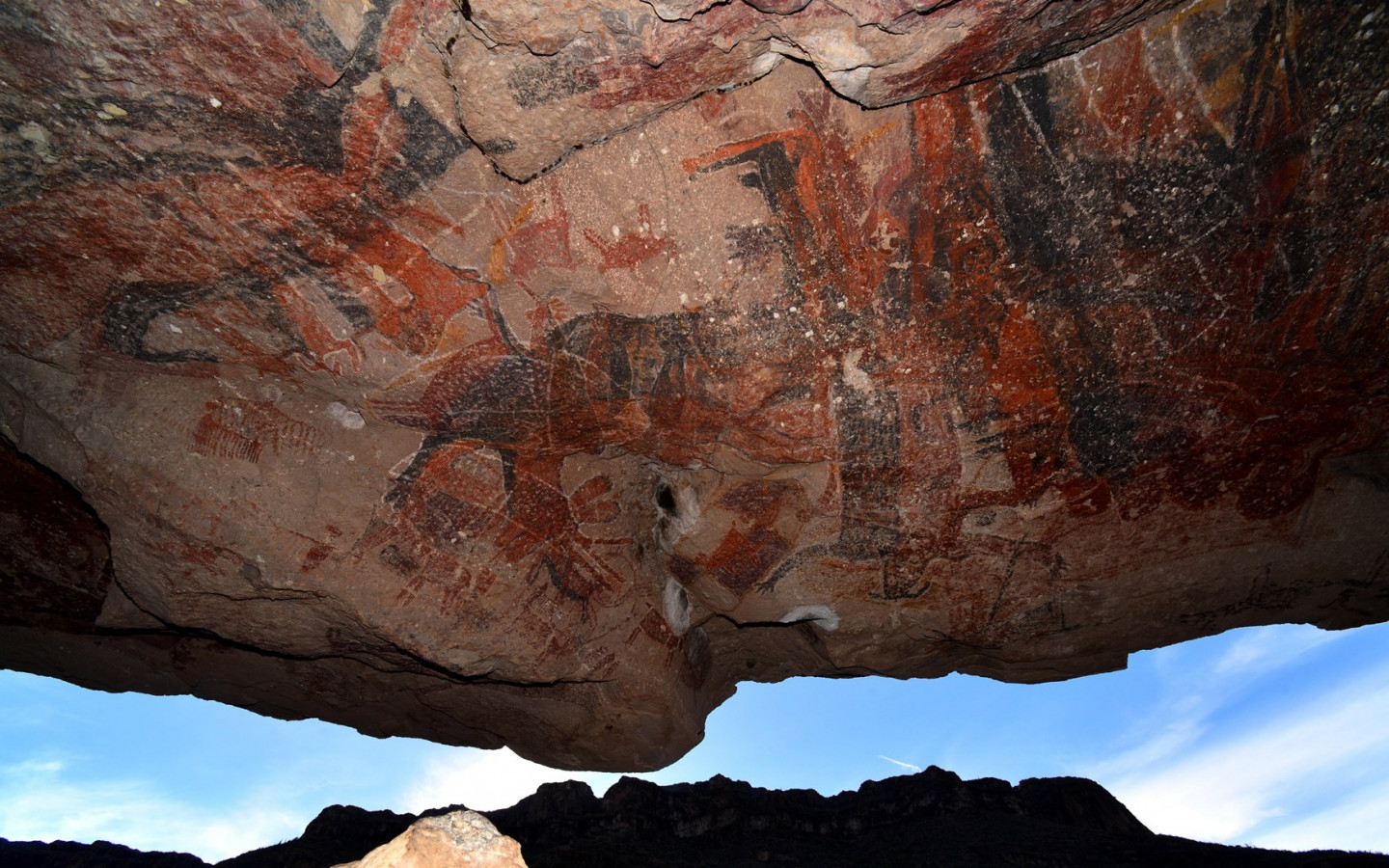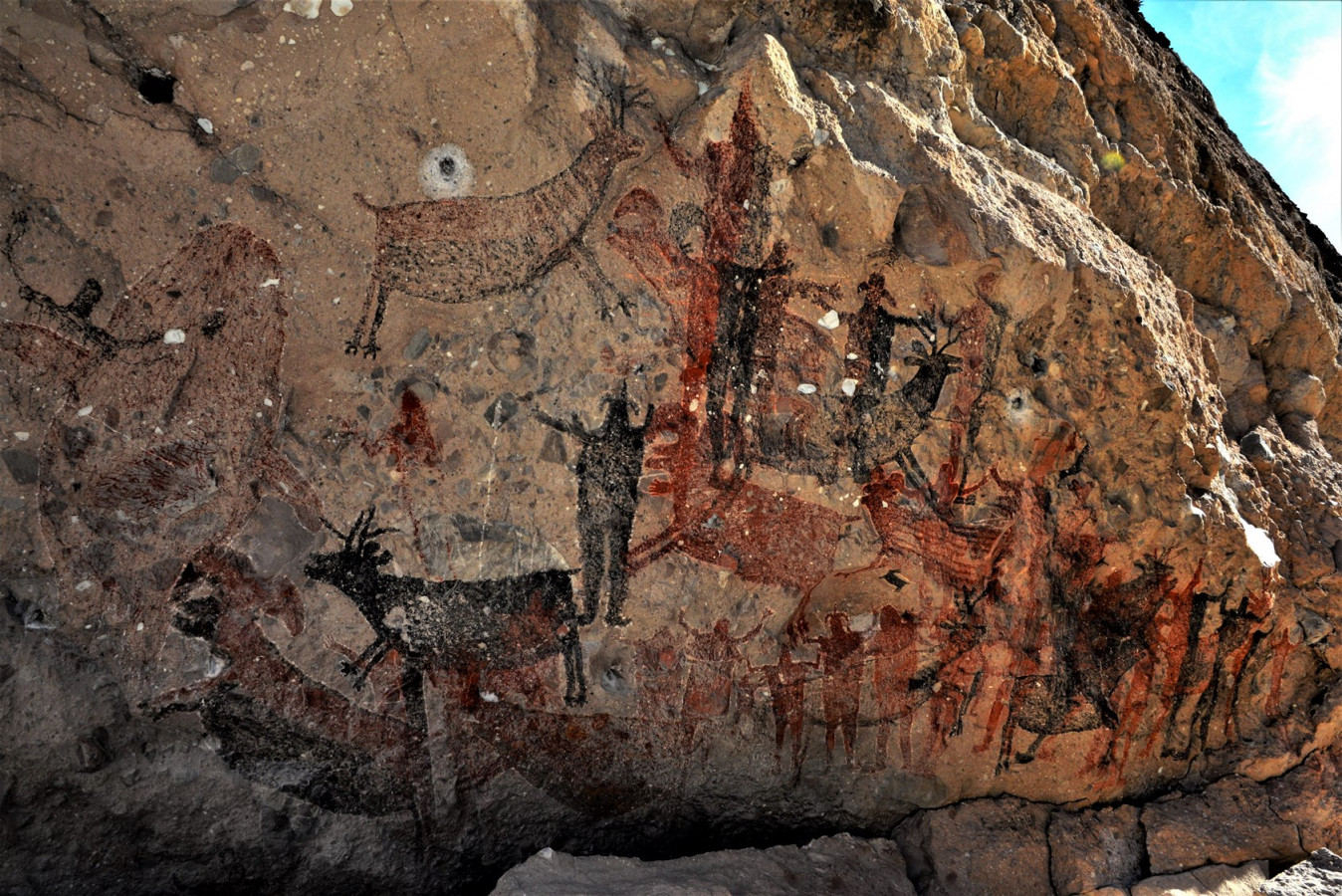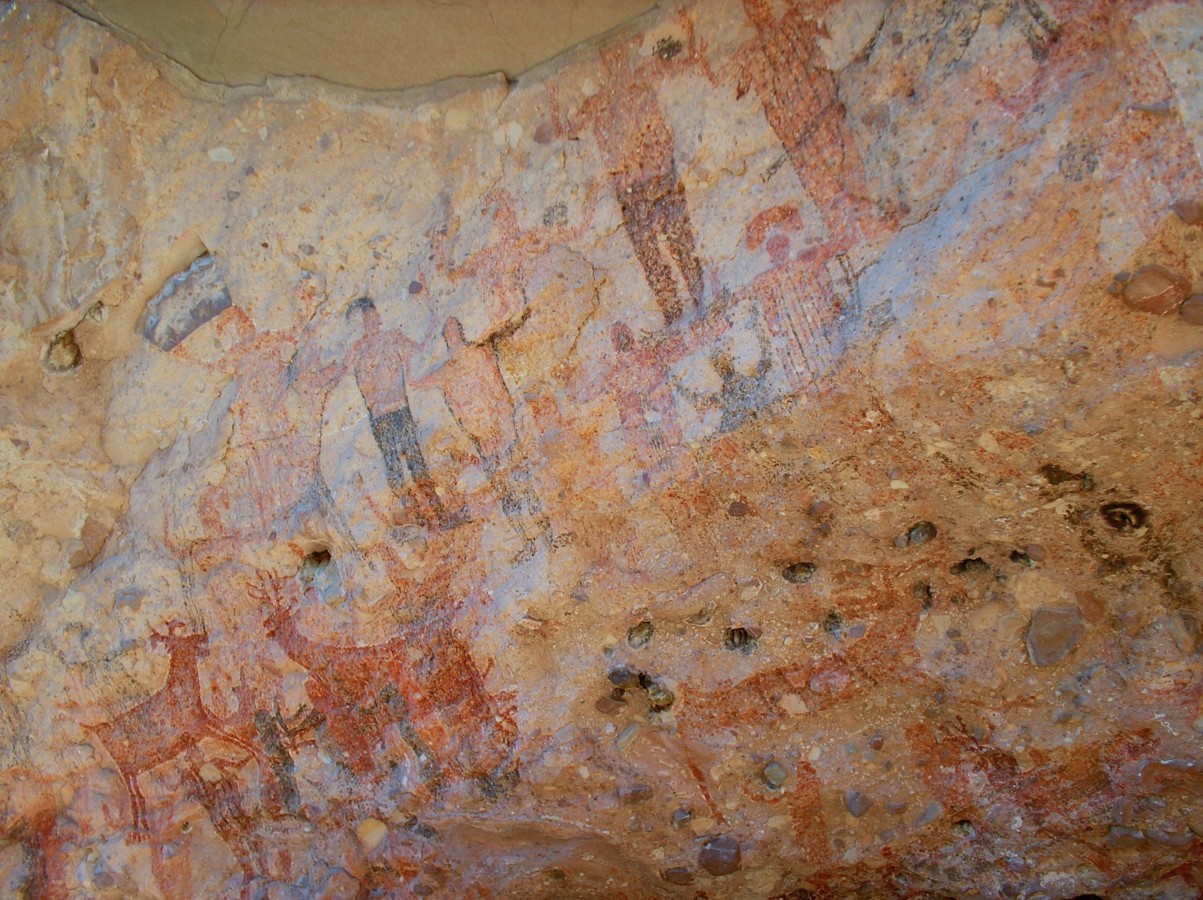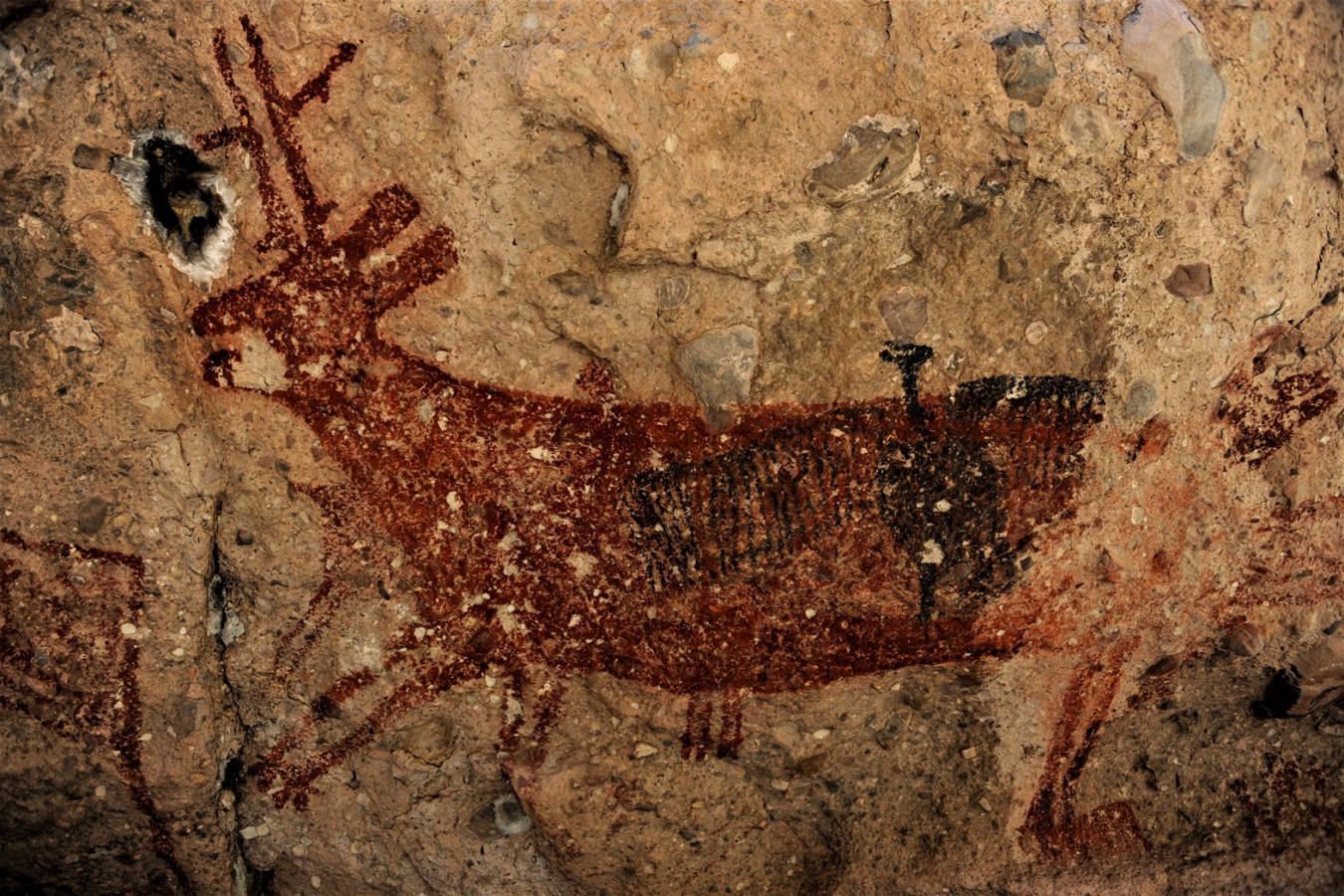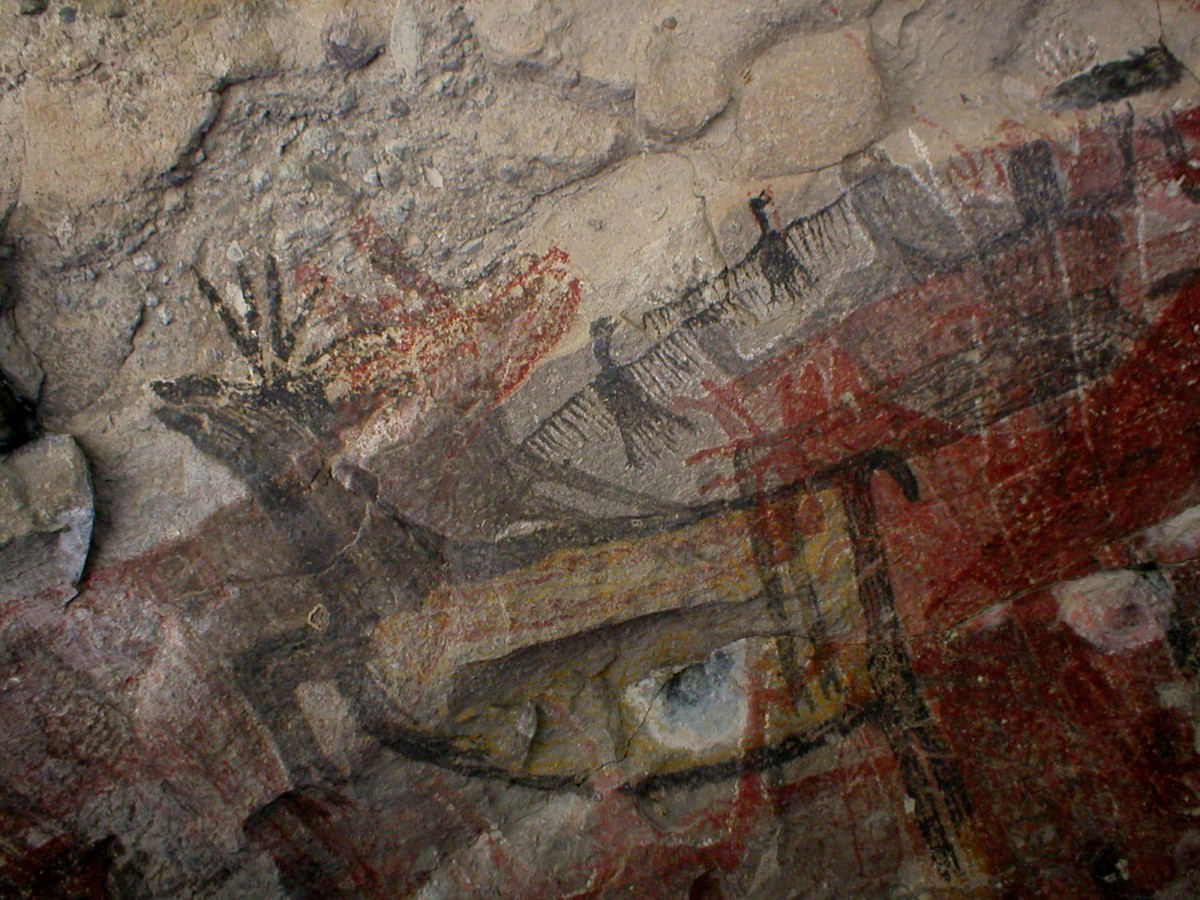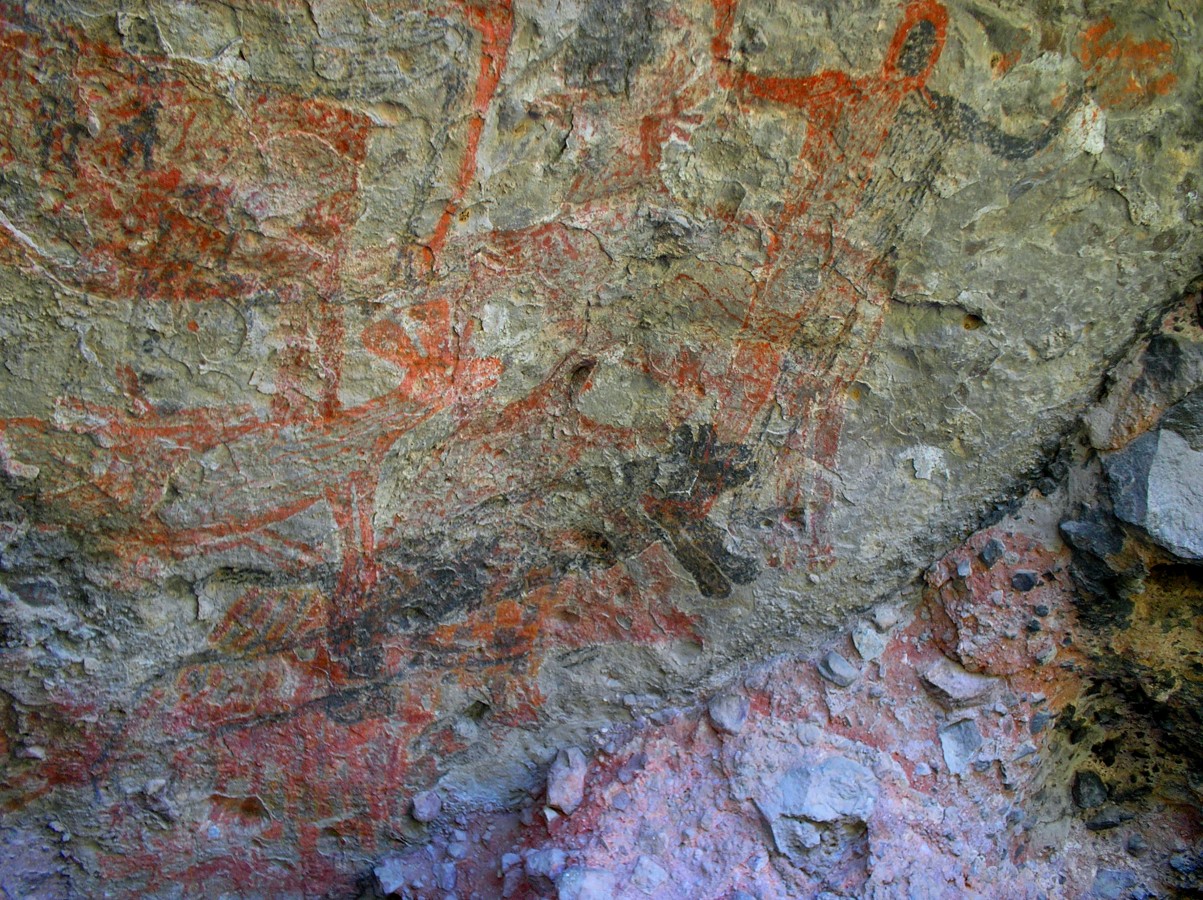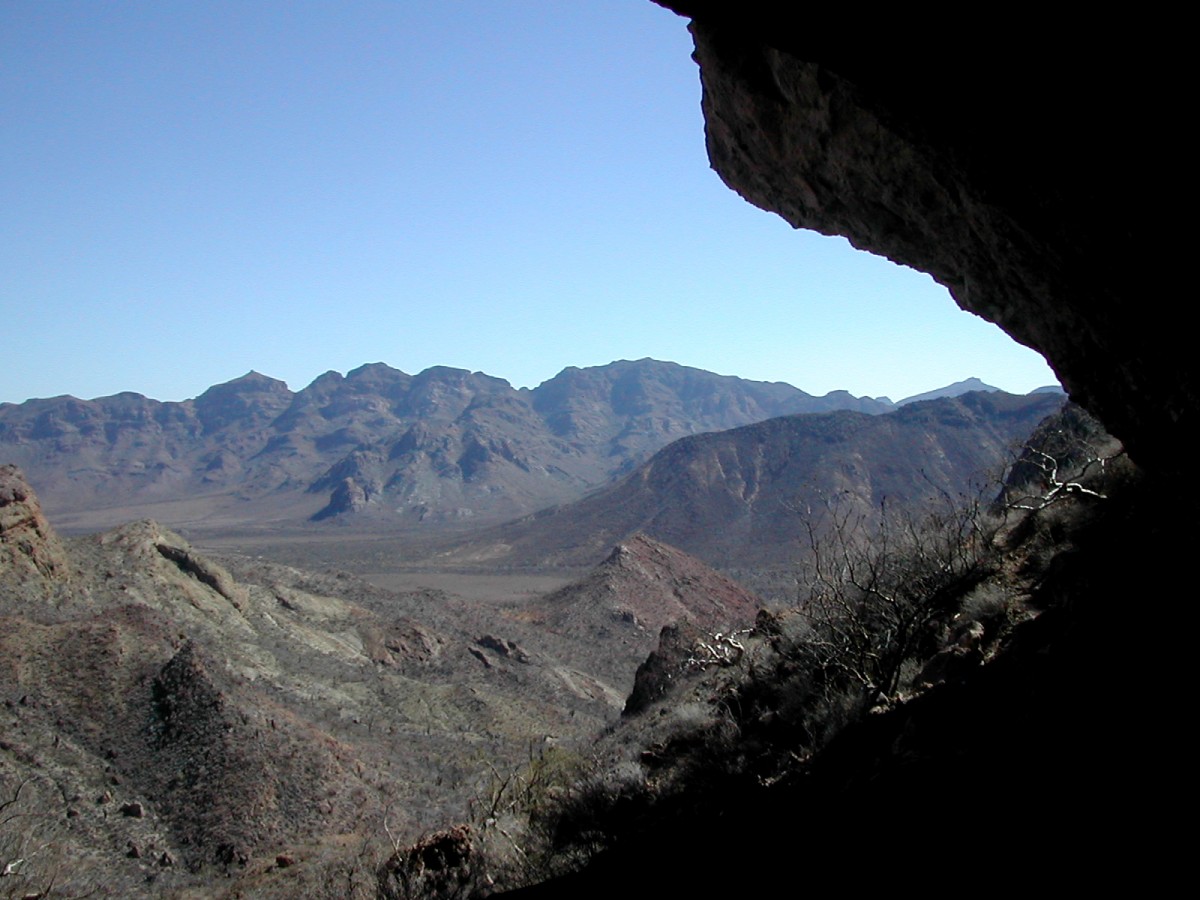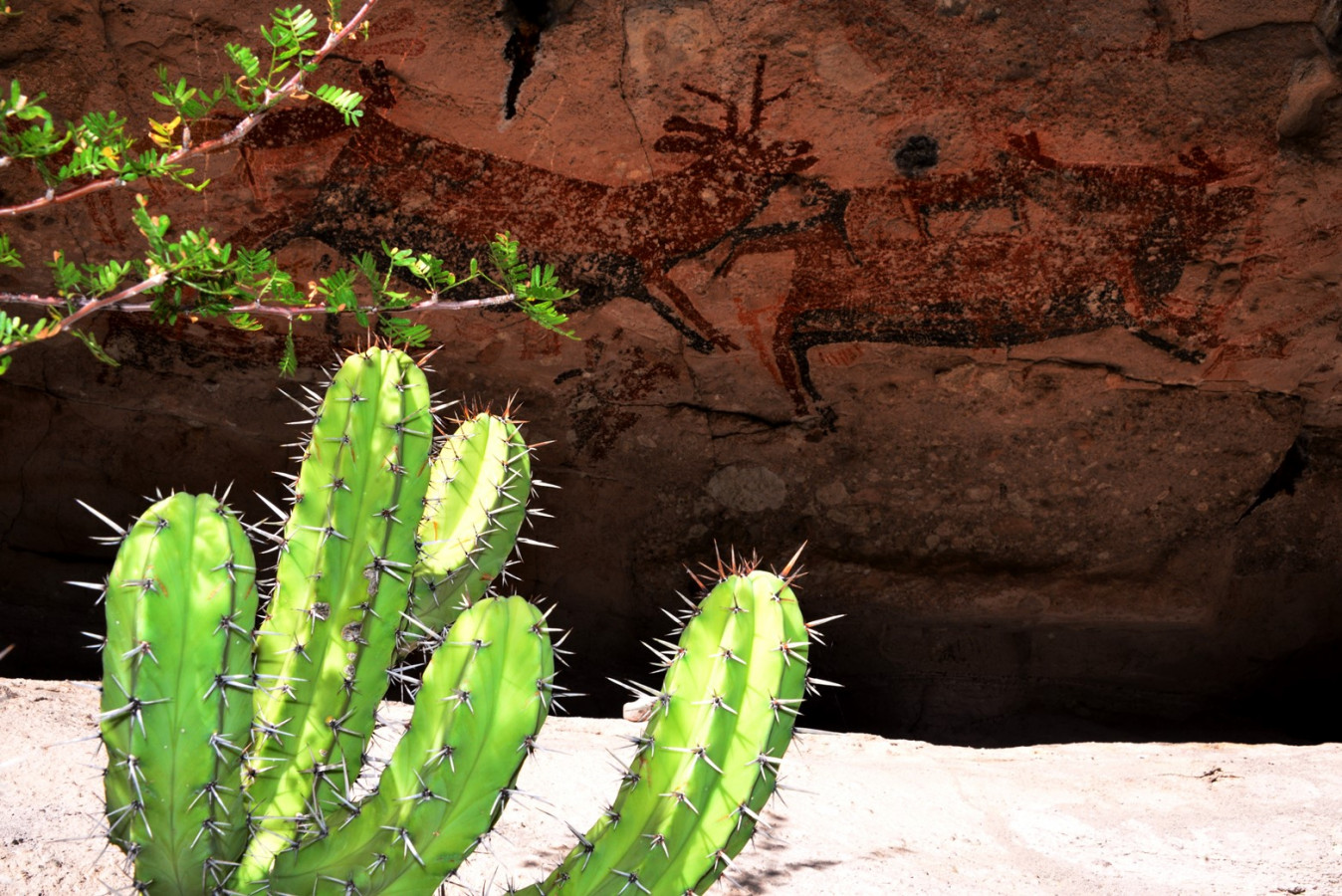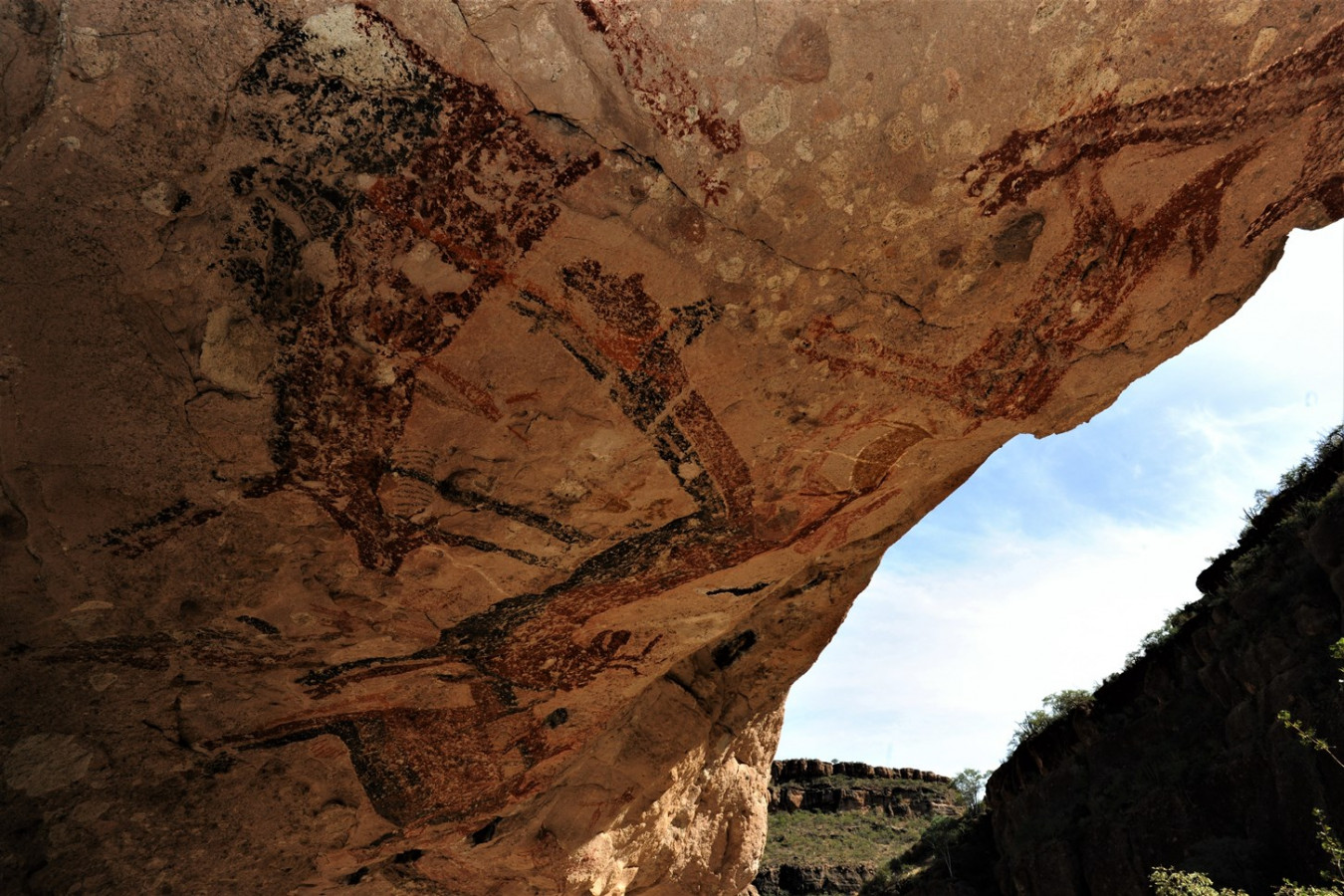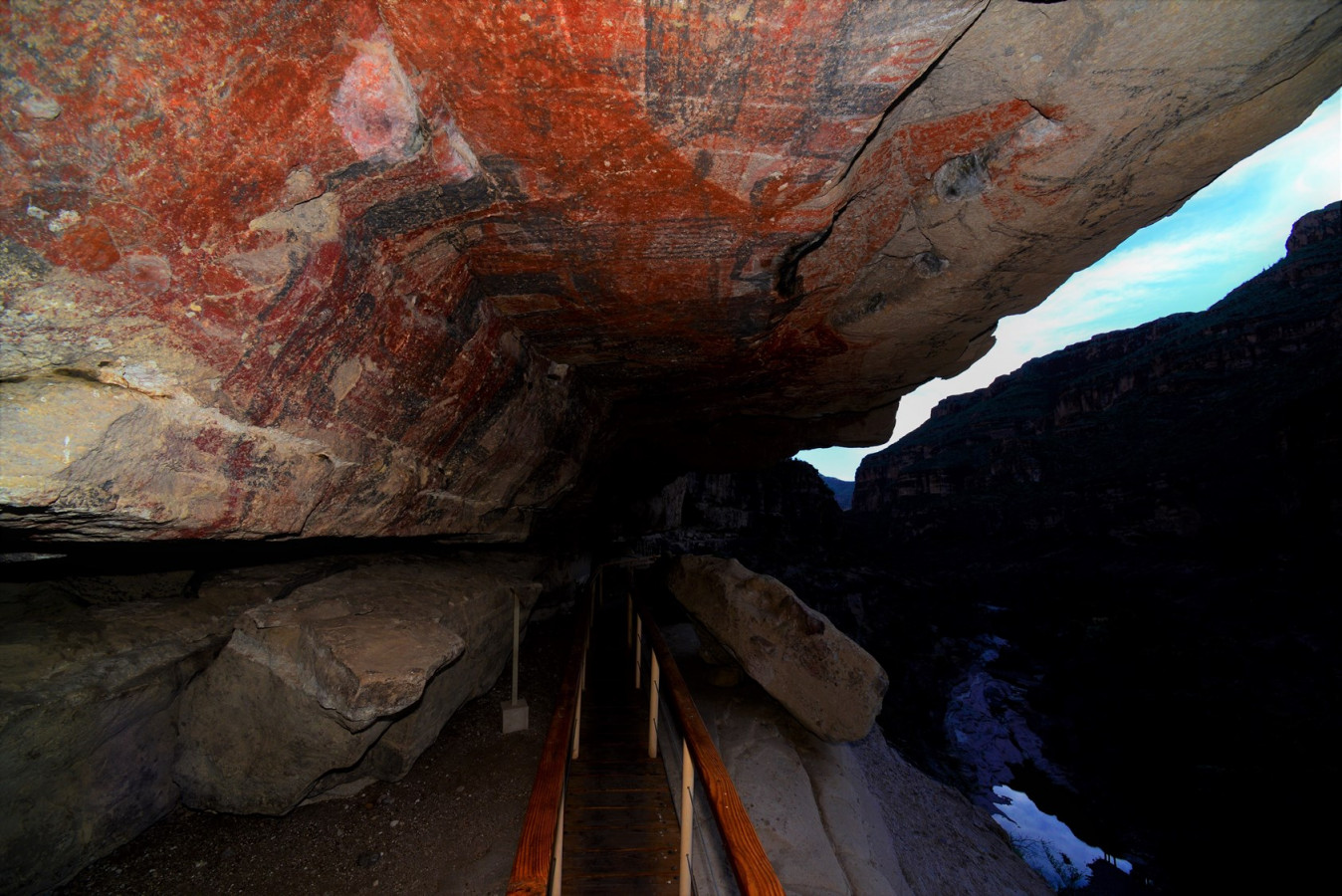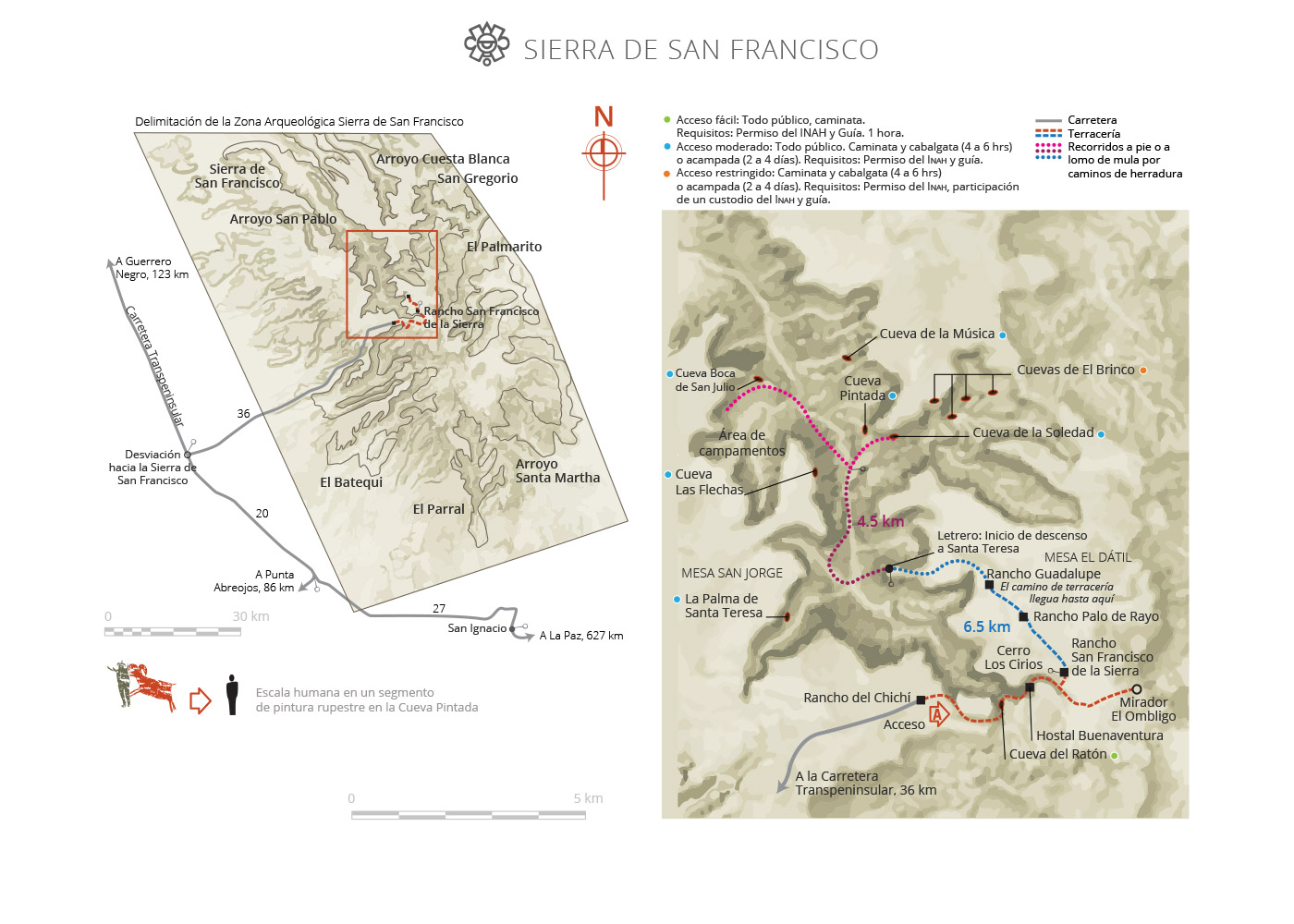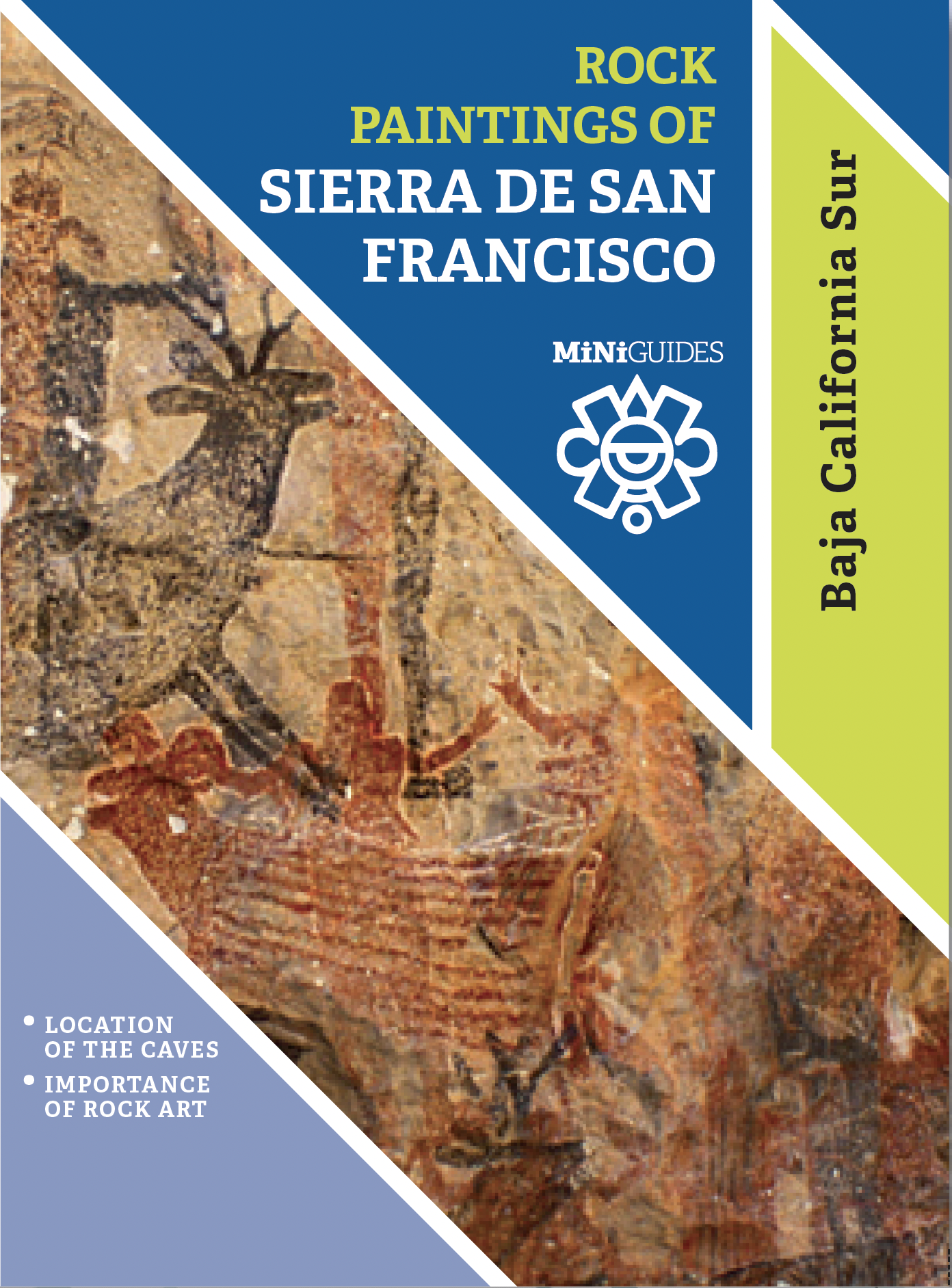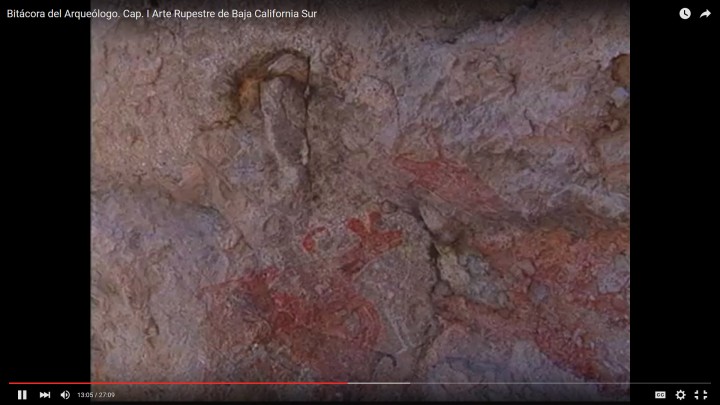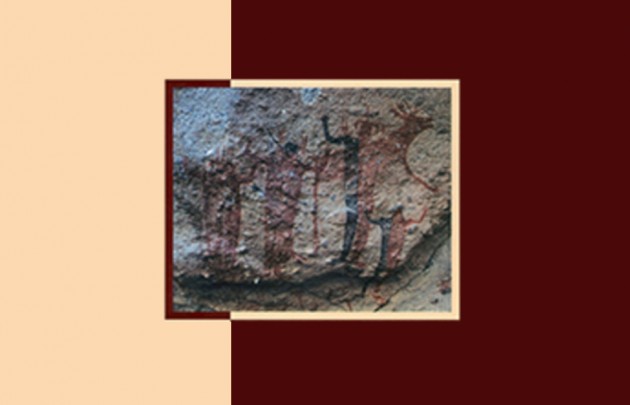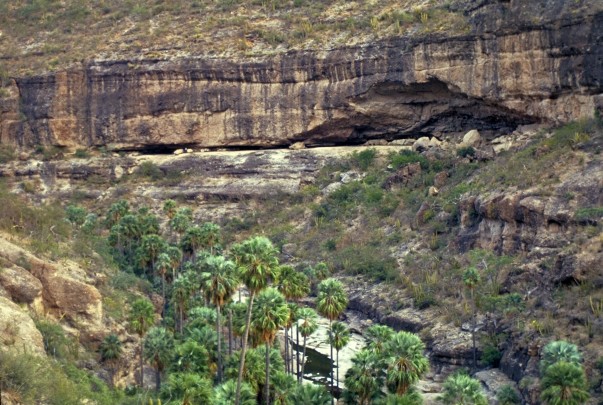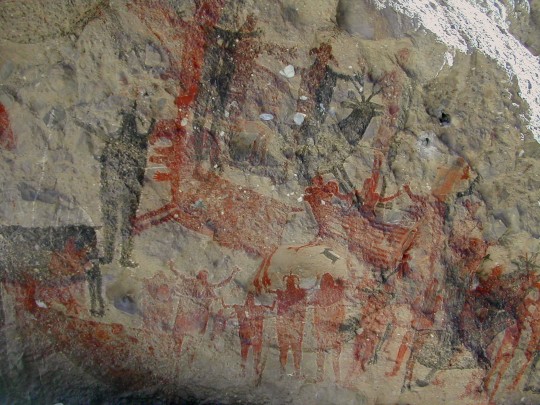Sierra de San Francisco
The area has some of the richest and most ancient cave paintings in the world. Dating back 8,800 years, these prehistoric paintings are in gullies, ravines and caves. They are remarkable for their size, quality and condition. The cave paintings were declared a UNESCO World Heritage Site in 1993.
World heritage since 1993
About the site
The Baja California peninsula has one of the most extraordinary arrays of cave paintings in the country. It remained virtually unexplored and isolated until way into the twentieth century, which kept the indigenous peoples relatively apart from mainland influences, allowing complex local cultures to develop. The mass production of rock art since very ancient times is one of the most notable features of the prehistory of the peninsula.
The Sierra of San Francisco reaches a height of 5,200 feet above sea level. The most spectacular and best conserved sites are contained in an area covering of approximately 1,390 square miles. This provided the best conditions for hunter-gatherer groups to thrive from the late Pleistocene, 10,000 years before the present, until the arrival of Jesuit missionaries at the end of the seventeenth century. The beauty of the countryside and the vegetation of the canyons and mesas add to the aesthetic value of the art.
The numerous and highly varied painted surfaces are extraordinarily well preserved. Their creators succeeded in producing imagery which demonstrates to us that small scale societies with economies based hunting, fishing and gathering were capable of developing sophisticated systems of symbols, which to a large extent reflect their world view. The style is essentially realistic and is dominated by figures of humans, terrestrial and aquatic animals designed in red, black, white and yellow. Very often the largest images are larger than life. Their monumental size is accentuated by the fact that the paintings are often located high up on the slabs and overhangs of rock shelters. The overlaying of figures is very common. There is also an abundance of petroglyph sites which bring together thousands of individual figures.
The Jesuits were the first to describe the “great murals” in the eighteenth century, although it was not till later that Harry Crosby, the US historian and photographer, coined this expression, which has been widely accepted. Leon Diguet, an industrial chemist working in the French El Boleo copper mine in Santa Rosalía, explored the Sierras of San Francisco and Guadalupe in 1894.
Archeological work on the Sierra indicates that the practices of painting and engraving lasted for a long period of time and were of essential importance to the indigenous world view. European chroniclers and missionaries recorded some ritual practices and the artifacts used in these. A few of these artifacts have been recognized in the rock paintings and have also been found in the archeological excavations of the site.
Walkways, protective rails, fences, access paths and information signs have been installed to protect the integrity of the site and to avoid the deterioration of the paintings in the most visited great mural sites which can be visited by road or with short walks, and which require a permit to visit. There are other sites which also require a permit to visit and can be reached by mule or by a trek, in which case it is necessary to camp in the areas designated specifically for this purpose. There is an INAH information module in the city of San Ignacio which serves a dual purpose: as a photographic exhibition gallery and as a booking and orientation center for visitors to the Sierra.
The Sierra of San Francisco reaches a height of 5,200 feet above sea level. The most spectacular and best conserved sites are contained in an area covering of approximately 1,390 square miles. This provided the best conditions for hunter-gatherer groups to thrive from the late Pleistocene, 10,000 years before the present, until the arrival of Jesuit missionaries at the end of the seventeenth century. The beauty of the countryside and the vegetation of the canyons and mesas add to the aesthetic value of the art.
The numerous and highly varied painted surfaces are extraordinarily well preserved. Their creators succeeded in producing imagery which demonstrates to us that small scale societies with economies based hunting, fishing and gathering were capable of developing sophisticated systems of symbols, which to a large extent reflect their world view. The style is essentially realistic and is dominated by figures of humans, terrestrial and aquatic animals designed in red, black, white and yellow. Very often the largest images are larger than life. Their monumental size is accentuated by the fact that the paintings are often located high up on the slabs and overhangs of rock shelters. The overlaying of figures is very common. There is also an abundance of petroglyph sites which bring together thousands of individual figures.
The Jesuits were the first to describe the “great murals” in the eighteenth century, although it was not till later that Harry Crosby, the US historian and photographer, coined this expression, which has been widely accepted. Leon Diguet, an industrial chemist working in the French El Boleo copper mine in Santa Rosalía, explored the Sierras of San Francisco and Guadalupe in 1894.
Archeological work on the Sierra indicates that the practices of painting and engraving lasted for a long period of time and were of essential importance to the indigenous world view. European chroniclers and missionaries recorded some ritual practices and the artifacts used in these. A few of these artifacts have been recognized in the rock paintings and have also been found in the archeological excavations of the site.
Walkways, protective rails, fences, access paths and information signs have been installed to protect the integrity of the site and to avoid the deterioration of the paintings in the most visited great mural sites which can be visited by road or with short walks, and which require a permit to visit. There are other sites which also require a permit to visit and can be reached by mule or by a trek, in which case it is necessary to camp in the areas designated specifically for this purpose. There is an INAH information module in the city of San Ignacio which serves a dual purpose: as a photographic exhibition gallery and as a booking and orientation center for visitors to the Sierra.
Map
Did you know...
- Close to 800 rock art sites are recorded in the Sierra of San Francisco, and the neighboring Sierra of Guadalupe.
- The state of conservation of the rock paintings is very good owing to the nature of the region’s geology and to the dry weather.
- The Jesuits who visited the “great mural” sites were under the impression that the paintings were “old.”
- The local Cochimi people have said they had no knowledge of their origins, attributing them to an ancient now-disappeared race of giants who came from the north.
Practical information
Requires reservation
It's by itinerary depending on the reservation.
$100.00 pesos
La reservación se hace en la Unidad de Información y manejo de la Zona Arqueológica de la Sierra en San Francisco en San Ignacio, Baja California Sur de lunes a domingo de 09:00 a 14:00 hrs. El teléfono para reservaciones es +52 (615) 154 02 22
Se localiza hacia la parte central de la península de Baja California.
-
+52 (615) 154 02 22
-
This email address is being protected from spambots. You need JavaScript enabled to view it.
Directory
Delegada del Centro INAH Baja California Sur
Dra. María de la Luz Gutiérrez
This email address is being protected from spambots. You need JavaScript enabled to view it.
+52 (612) 123 03 99

